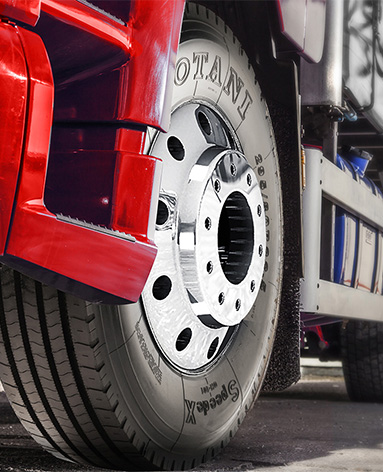Nov . 25, 2024 12:44 Back to list
brake drum installation
Brake Drum Installation A Step-by-Step Guide
Brake drums are critical components of your vehicle's braking system, providing reliable stopping power through friction. Over time, these drums can wear down or become damaged, necessitating replacement. This guide will walk you through the process of brake drum installation, ensuring your vehicle operates safely and effectively.
Tools and Materials Needed
Before you begin the installation process, gather the necessary tools and materials
1. Tools - Jack and jack stands - Lug wrench - Brake drum puller (if necessary) - Socket set and ratchet - Torque wrench - Screwdrivers (flathead and Phillips) - Pliers - Clean cloths
Safety First
Before starting any work on your vehicle, ensure that you take the necessary safety precautions. Work on a flat surface, engage your parking brake, and wear gloves to protect your hands. If you’re using a jack, ensure that the jack stands are securely positioned to prevent any accidental drops.
Step-by-Step Installation Process
1. Remove the Wheel - Loosen the lug nuts slightly while the vehicle is still on the ground. Once loose, raise the vehicle using a jack and secure it with jack stands. Remove the lug nuts completely and take off the wheel to expose the brake components.
brake drum installation

2. Remove the Brake Drum - Inspect the brake drum for retaining screws or clips; if present, remove them. If the drum is stuck, you may gently tap it with a rubber mallet to loosen it, or employ a brake drum puller. Once loose, slide the drum off the wheel hub.
3. Inspect Brake Components - After removing the drum, it's essential to inspect the brake shoes, springs, and hardware. Look for signs of wear or damage. If you notice any worn components, this is a great time to replace them before installing the new drum.
4. Prepare the New Drum - Before installation, clean the new brake drum with brake cleaner to remove any manufacturing grease or dirt. It is crucial to ensure a clean surface for proper friction and effective braking.
5. Install New Brake Shoes - If you chose to replace the brake shoes, now is the time. Start by positioning the new shoes in place, ensuring they fit snugly against the backing plate. Reattach any springs and hardware, following the manufacturer’s specifications for correct positioning.
6. Install the New Drum - Carefully slide the new brake drum onto the hub over the brake shoes. Ensure that it fits smoothly without any unusual resistance. If it’s a tight fit, double-check the positioning of your new shoes.
7. Reattach Wheel and Lower Vehicle - Replace the wheel onto the hub and hand-tighten the lug nuts. Carefully lower the vehicle back to the ground and secure it. Once on the ground, use a torque wrench to tighten the lug nuts to the manufacturer’s recommended specifications.
8. Test the Brakes - Before taking your vehicle back on the road, it is crucial to test the brakes. Pump the brake pedal a few times to seat the new shoes and drum properly. Check for any unusual noises or issues before driving.
Conclusion
Installing brake drums can be a straightforward process if you take the time to follow each step carefully. By ensuring you have the right tools and taking necessary safety precautions, you can effectively replace your brake drums, enhancing the safety and performance of your vehicle. Regular maintenance, including timely replacement of brake components, can prevent more significant issues down the line, keeping you and others safe on the road. Always consult your vehicle’s manual for specific instructions and torque specifications, and if unsure, don’t hesitate to seek professional assistance.
-
Scania Brake Drums: OEM Quality for Optimal Safety & Durability
NewsAug.16,2025
-
R.V.I: Advanced Remote Visual Inspection for Precision
NewsAug.15,2025
-
Discover HYUNDA: Innovative Vehicles, Equipment & Solutions
NewsAug.14,2025
-
R.V.I: Unlock Advanced Insights & Real-time Performance
NewsAug.13,2025
-
Kamaz Brake Drum: Durable & Reliable for Heavy Duty Trucks
NewsAug.12,2025
-
Heavy Duty Iveco Brake Drum - Premium Quality & Safety
NewsAug.11,2025
